MORE IMPORTANT INFORMATION ABOUT YOUR TRAVEL TO Bari Torre Quetta
Bari (BAR-ee, italiano: [ˈbaːri]; Barese: Bare [ˈbæːrə]; latín: Barium; griego antiguo: Βάριον, romanizado: Bárion) es la ciudad capital de la ciudad metropolitana de Bari y de la región de Apulia, en el Mar Adriático, en el sur de Italia. Es el segundo centro económico más importante del sur de Italia continental después de Nápoles (y el tercero después de Palermo, si se incluye Italia Insular), una ciudad portuaria y universitaria, así como la ciudad de San Nicolás. La ciudad en sí tiene una población de 320,257 habitantes, más de 116 kilómetros cuadrados (45 millas cuadradas), mientras que el área urbana tiene 750,000 habitantes. El área metropolitana tiene 1.3 millones de habitantes. Bari se compone de cuatro secciones urbanas diferentes.
Source:
WikipediaADDITIONAL INFORMATION ABOUT Nápoles
Nápoles (; italiano: Napoli [ˈnaːpoli]; napolitano: Napule [ˈnɑːpələ, ˈnɑːpulə]; griego antiguo: Νεάπολις, romanizado: Neápolis) es la capital regional de Campania y la tercera ciudad más grande de Italia después de Roma y Milán. En 2017, alrededor de 967,069 personas vivían dentro de los límites administrativos de la ciudad; Su municipio a nivel de provincia tiene una población de 3.115.320 habitantes. Su área metropolitana continuamente construida (que se extiende más allá de los límites de la Ciudad Metropolitana de Nápoles) es la tercera área metropolitana más grande de Italia y una de las ciudades más densamente pobladas de Europa. Establecida por primera vez por los griegos en el segundo milenio antes de Cristo, Nápoles es una de las zonas urbanas habitadas más antiguas del mundo. En el siglo IX a.
Source:
WikipediaImages of the trains for your trip

Where Can You Travel With Us?
TAKE A LOOK AT OUR MAP
France
Italy
Netherlands
Luxembourg
Austria
Germany
Belgium
Switzerland
Denmark
Sweden
Norway
Hungary
Czech
Ukraine
China
Active
France, Italy, Netherlands, Luxembourg, Austria, Germany, Belgium, Switzerland, Denmark, Sweden, Norway, Hungary, Czech, Ukraine, China
Upcoming
USA, Canada, Spain, Poland, Japan

Other Train Trips From Nápoles:

Nápoles to Cutro

Nápoles to Corigliano Calabro

Nápoles to Candida

Nápoles to Ripa D Api

Nápoles to Avezzano

Nápoles to Cantalupo Del Sannio Macchiagodena

Nápoles to Losa

Nápoles to Itri

Nápoles to Cunico Scandeluzza

Nápoles to Ponte Di Piave

Nápoles to Génova Bolzaneto

Nápoles to Siena

Nápoles to Maglie Vía Otranto

Nápoles to Muro Leccese

Nápoles to Benevento

Nápoles to Chiavenna

Nápoles to Ronchi Dei Legionari Sur

Nápoles to Apricena Garganico

Nápoles to Ospedale Versilia

Nápoles to Lido Silvana

Nápoles to Fildidonna

Nápoles to Castillo De San Nicolás

Nápoles to Portomaggiore

Nápoles to Mocone

Nápoles to Abano

Nápoles to Ancona Torrette

Nápoles to Soleminis

Nápoles to Lana Postal Lana Burgstall

Nápoles to Biagioni Lagacci

Nápoles to Pelago
WHY YOU SHOULD TRAVEL BY TRAIN?
To travel from Nápoles To Bari Torre Quetta, trains would be the best travel choice, for several reasons:
1
Eco-Friendly
Trains are the most environmentally-friendly way of transport to the EU Environment Agency. They are powered by electricity, which is renewable and has a low environmental impact.
2
Speed
Travelling by train is in most cases the fastest way to go from Rome to Milan. Trains usually travel at high speeds, making them the fastest way to get from one place to another.
3
Safety
Travelling by train is one of the safest forms of transport. Trains are heavily regulated and monitored, making them safer than other forms of transport.
4
Price
Travelling by train is often cheaper than other forms of transport, such as flying or taking a bus. Trains are often subsidized by the government, making them cheaper than other forms of transport.
5
Luggage
Travelling by train is a great way to transport luggage. Trains usually have plenty of space for luggage and they are usually safe and secure.
6
Time
Travelling by train is often faster than other forms of transport, such as driving or taking a bus. Trains usually travel at high speeds, making them the fastest way to get from one place to another.
7
Comfortability
Travelling by train is usually very comfortable. Trains usually have comfortable seating and plenty of legroom, making them a great way to travel.
8
Sleep
Travelling by train is a great way to get some sleep. Trains usually have comfortable seats and plenty of legroom, making them a great way to get some rest while travelling.
9
WIFI
This is not necessarily the most important when you travel since we prefer to tell you to enjoy your travel without your phones, but on trains, you can find WIFI onboard, so you remain connected to the internet if you choose to.
Popular Routes

Geneva Airport To Champery

Paris To London St Pancras International

Paris To Brussels Midi South

Bologna To Verona Porta Nuova

Ragusa To Naples

Amsterdam To Brussels Zaventem Airport

Nice Ville To Lyon Part Dieu

Amsterdam To Brussels

Liege Guillemins To Eupen

Zurich Airport To Lauterbrunnen

Rotterdam To Antwerp Berchem

Paris Charles De Gaulle CDG Airport To Nantes

Milan To Rome

Stuttgart To Basel

Frankfurt To Paris

Amsterdam To Boom

Bellinzona To Basel

Vienna To Budapest Keleti Palyaudvar

Bietigheim Bissingen To Nuremberg

Paris To Rome

Biarritz To Bordeaux Saint Jean

London St Pancras International To Amsterdam

Naples To Milan

Zurich To Basel

Frankfurt To Amsterdam
THESE ARE THE TRAIN OPERATORS WE WORK WITH




















